
|
Astronomy Picture Of the Day (APOD)
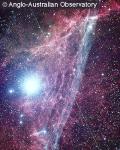 The Vela Supernova Remnant Expands
The Vela Supernova Remnant Expands
3.08.1999
The explosion is over but the consequences continue. About eleven thousand years ago a star in the constellation of Vela exploded, creating a strange point of light briefly visible to humans living near the beginning of recorded history.
 Regulus Occulted
Regulus Occulted
2.08.1999
On May 21, viewed from the continental US, a star winked out as it passed behind the dark limb of the first-quarter Moon. The star, Regulus, is hotter than the sun, about 69 light-years distant, and shines in Earth's skies as the brightest star in the constellation Leo, the Lion.
 Walking in Space
Walking in Space
1.08.1999
Pictured above is the first american astronaut to walk in space: Edward White. White is seen floating outside the Gemini 4 capsule in 1965. The term spacewalk is deceiving since astronauts do not actually walk - they float - usually without their feet touching anything solid. White was connected to the spaceship only by a thick tether.
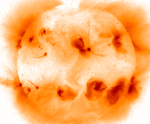 X Ray Triple Jet
X Ray Triple Jet
31.07.1999
Recorded on July 7, 1998, this animation using X-ray images of the Sun shows an amazing event - three nearly simultaneous jets connected with solar active regions. The two frames were taken several hours apart by the Soft X-ray Telescope on board the orbiting Yohkoh observatory.
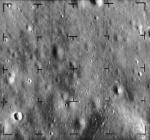 The Sea of Tranquillity: 5 Seconds To Impact
The Sea of Tranquillity: 5 Seconds To Impact
30.07.1999
On February 20th, 1965, the Ranger 8 spacecraft crashed into the Moon. Rapidly transmitting a series of pictures to ground controllers, its camera recorded this one at an altitude of about 11 kilometers, 5 seconds before impacting the lunar surface. Two kilometers across, with 4 meter
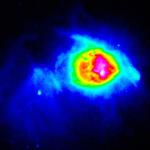 Hydrogen Blob N88A in the Small Magellanic Cloud
Hydrogen Blob N88A in the Small Magellanic Cloud
29.07.1999
The bright blob of hydrogen gas cataloged as N88A is seen at the right. It measures a mere 3 light years across. Emerging from the cool, dusty interstellar medium in a nearby irregular galaxy known as the Small Magellanic Cloud, N88A hides hot young stars at its core.
 Asia at Night
Asia at Night
28.07.1999
This is what Asia looks like at night! Can you find your favorite Asian city? Although not all of Asia is shown, city lights might make this task possible. The above picture is actually a composite of over 200 images made by satellites orbiting the Earth.
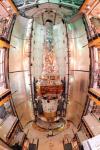 Chandra X Ray Telescope
Chandra X Ray Telescope
27.07.1999
Wrapped in protective blankets and mounted atop an Inertial Upper Stage (IUS) rocket, the Chandra X-ray Telescope is seen in this wide-angle view before launch snuggled into the space shuttle Columbia's payload bay.
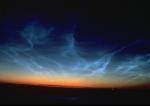 Noctilucent Clouds
Noctilucent Clouds
26.07.1999
Sometimes it's night on the ground but day in the air. As the Earth rotates to eclipse the Sun, sunset rises up from the ground. Therefore, at sunset on the ground, sunlight still shines on clouds above.
 The Cygnus Loop
The Cygnus Loop
25.07.1999
The shockwave from a 20,000 year-old supernova in the constellation of Cygnus supernova explosion is still expanding into interstellar space. The collision of this fast moving wall of gas with a stationary cloud...
|
January February March April May June July August September October November December |
|||||||||||||||||||||||||||||||||||||||||||||||||